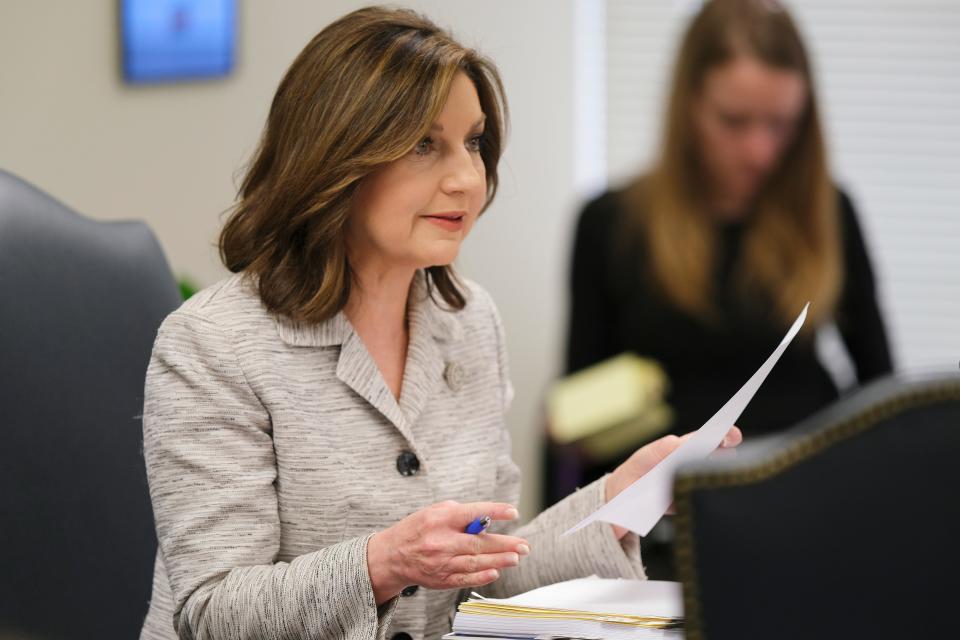Report: Proportion of funds for Oklahoma K-12 classrooms remains flat since 2010
A new report indicates the proportion of funding devoted to Oklahoma's public school classrooms has remained relatively flat since 2010 despite back-to-back teacher pay raises in recent years.
From 2010 through 2021, the state spent roughly 58% of its common education funding on classroom instruction — the vast majority of which is dedicated to teacher pay and benefits, according to a new report from the Legislative Office of Fiscal Transparency.
But state schools Superintendent Joy Hofmeister took issue with parts of the report that said since 2010 spending on administrative functions of schooling have increased more than spending on classroom instruction.
Instructional expenditures increased 35% while administrative expenditures — including the costs of building operations, student transportation, food service and salary and benefits for school administrators — increased 40%, said LOFT Director Mike Jackson.
The percentage of education funding spent on classroom instruction is closer to 68% when including instruction-related expenditures such as salaries and benefits for teaching assistants, librarians, library aides and more, Hofmeister said.

She also said LOFT's calculation of the growth in administrative expenditures is skewed because it factored in $101 million in technology services in fiscal year 2021 that could not be counted in 2010 due to a coding discrepancy. Therefore, the increase in administrative expenditures since 2010 is only 25% — or less than the growth in classroom spending, she said.
While the LOFT report notes the Oklahoma Legislature approved teacher pay raises in 2018 and 2019, lawmakers also provided $1,250 pay raises in 2019 to more than 34,000 school support professionals, many of whom are classified as administrative employees, Hofmeister said.
The report recommends the Legislature establish ideal ratios of administrative expenditures versus classroom expenses. New common education funding should be directed to classroom instruction while requiring districts to report measurable outcomes, the report suggests.
Officials: Oklahoma should better fund schools districts with high poverty rates
LOFT officials presented to state lawmakers on Tuesday the report that details how state funds are distributed for K-12 public education. Common education funding makes up the single largest share of the state budget.
State education and LOFT officials managed to find some common ground.
The report recommends the Legislature alter the state's complex school funding formula, including providing additional funding to school districts with high concentrations of poverty.
In 2022, 72% of all Oklahoma school districts had more than 50% of their students classified as economically disadvantaged, said LOFT program evaluator Bradley Ward. In a seven-state region, Oklahoma is the only state that does not provide additional financial support to school districts with concentrated poverty.
He suggested Oklahoma look to Arkansas, where the neighboring state provides additional funding to districts based on the concentration of students eligible for federal free or reduced-price meals.
The State Department of Education previously supported legislative efforts to alter the state funding formula, Hofmeister said.
"While it has held the test of time, OSDE also agrees that the formula does not fully account for the needs of students," Hofmeister said. "Oklahoma's students have greater and more diverse needs than ever before."
The state's funding formula has remained largely unchanged since it was adopted in 1981.
Although lawmakers didn't discuss this policy recommendation, the report suggested the Legislature alter the State Board of Education so the House Speaker and Senate Pro Tem get to appoint members to the governing body. The board is currently made up of the state superintendent and six gubernatorial appointees.
Editor's note: This story has been updated to reflect that 72% of all Oklahoma school districts in 2022 had more than 50% of their students classified as economically disadvantaged. The percentage of students and the year were incorrect in an earlier version of this story.
This article originally appeared on Oklahoman: Report: Proportion of funds for Oklahoma K-12 classrooms remains flat

